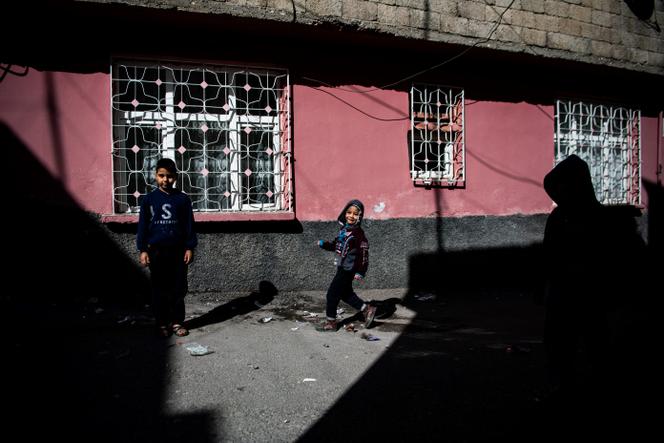


In Gaziantep, in Turkey's far south, some 50 kilometers from the Syrian border, the garlic and pistachio season had not yet begun. The cotton harvest was due in September. It was instad time to dry the peppers, the chilies and the eggplants that stretched out as far as the eye could see, across the brightly colored landscape tinged with yellow, red and black, flanked by hills that were fiercely mottled in the light from a fiery sky. Here, on the heights of the small remote town of Oguzeli, a dozen or so Syrians toiled over the day's harvest. Some had gloves, a mere knife as a tool, and mountains of crates to fill before the arrival of the trucks, the outdated remnants of a time of fleeting prosperity. A world of labor, sweat and silence, entirely given over to exploitation and misery.
Abdullah Zahra, 17, who had arrived from Aleppo in 2012 to escape the war in Syria with his whole family, started working in these fields two years ago, after leaving school, where he had quickly learned to speak Turkish. "I prefer it here," said the teenager in a low voice, "even if it's hard, very hard." With his three brothers, his parents and an uncle, Abdullah lives in an apartment in the city. "Our family gets by pretty well," he said. "Most seasonal workers like us live in tents roughly next to the greenhouses or farmland."
Work begins at dawn and ends at dusk, stretching between 10 and 11 hours spent in the fields, 7 days a week, with one day off every fortnight, depending on the workload. His face worn with fatigue, Abdullah claimed he was earning 600 Turkish lira a day, the equivalent of €17 (or around €450 a month) in good months. On top of this sum, he received between 500 and 700 Turkish lira per person and per child (between €14 and €20) in monthly aid granted to Syrian families by the Turkish government and the European Union. "All in all, it's not much," he said. Not even enough to reach the Turkish minimum wage (17,500 Turkish lira, or just over €500 per month), which is, in turn, just below the poverty line.
"In June," he pointed out, "there will be more of us and the work will be more intense, up to 15 hours a day." After that, he will work for another three months, depending on demand. Perhaps in Urfa, to the east, or in the Mersin region, or even perhaps in Antalya, even further west – in any case, somewhere along this southern Turkish axis, where the heat-bathed soils abound with fruit and vegetables, and absorb a large part of the seasonal workforce for very low wages. Numbers vary, but there are nearly 3 million seasonal agricultural workers in the country, of whom less than a third are on the books. Up until about 10 years ago, more than three-quarters of seasonal farm workers in Turkey were people of Kurdish background. The situation has changed dramatically since the arrival of Syrian refugees.
You have 65.62% of this article left to read. The rest is for subscribers only.
